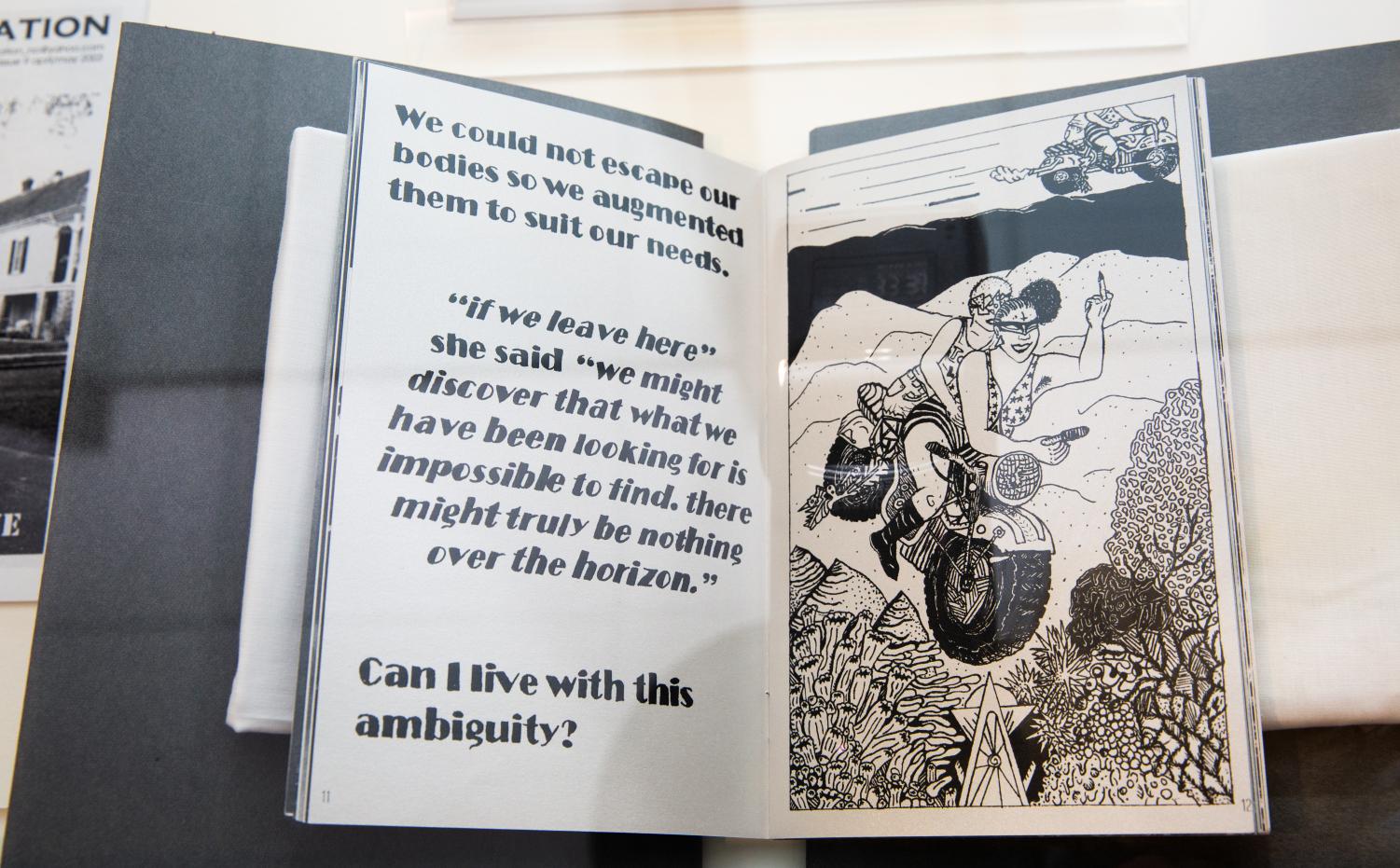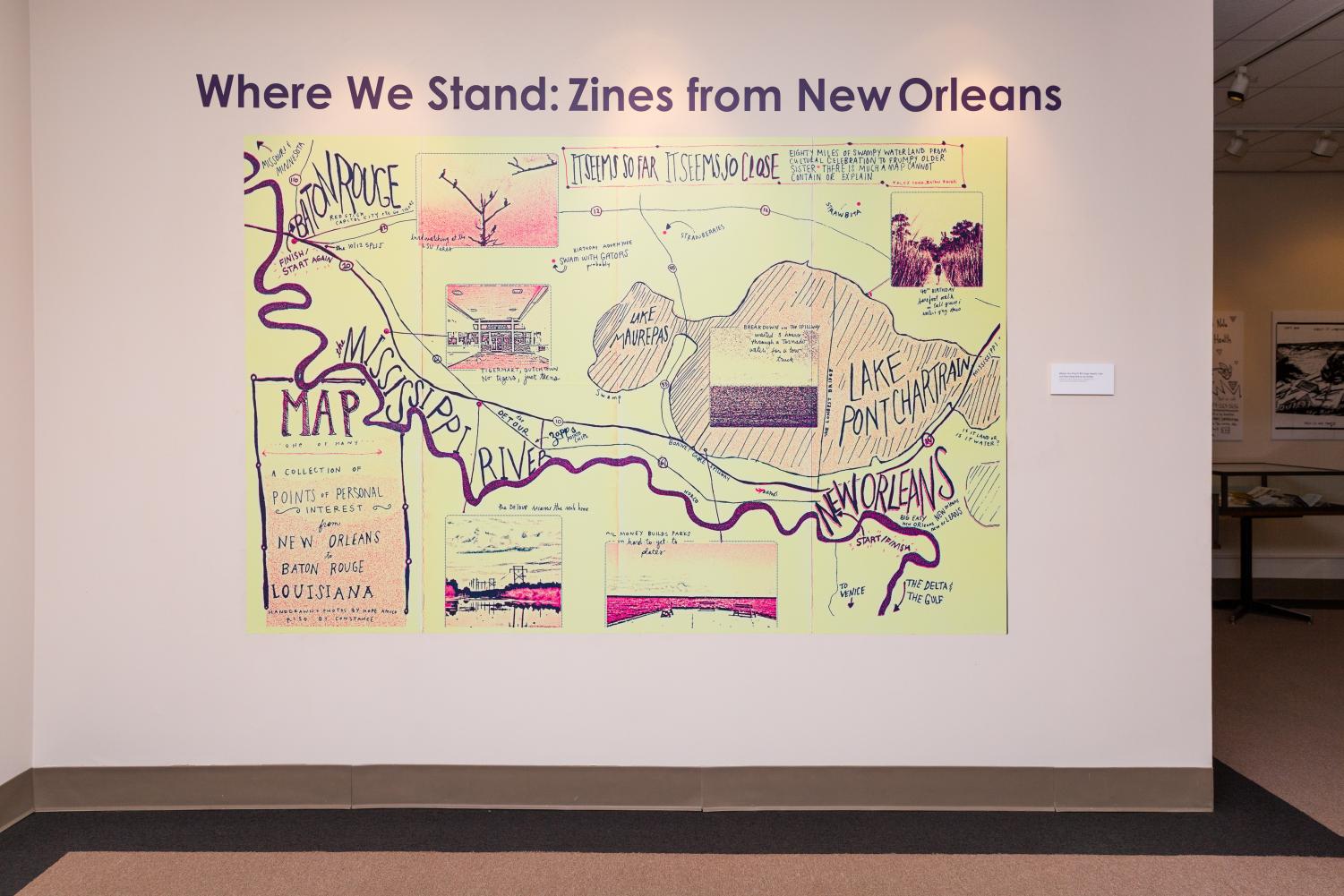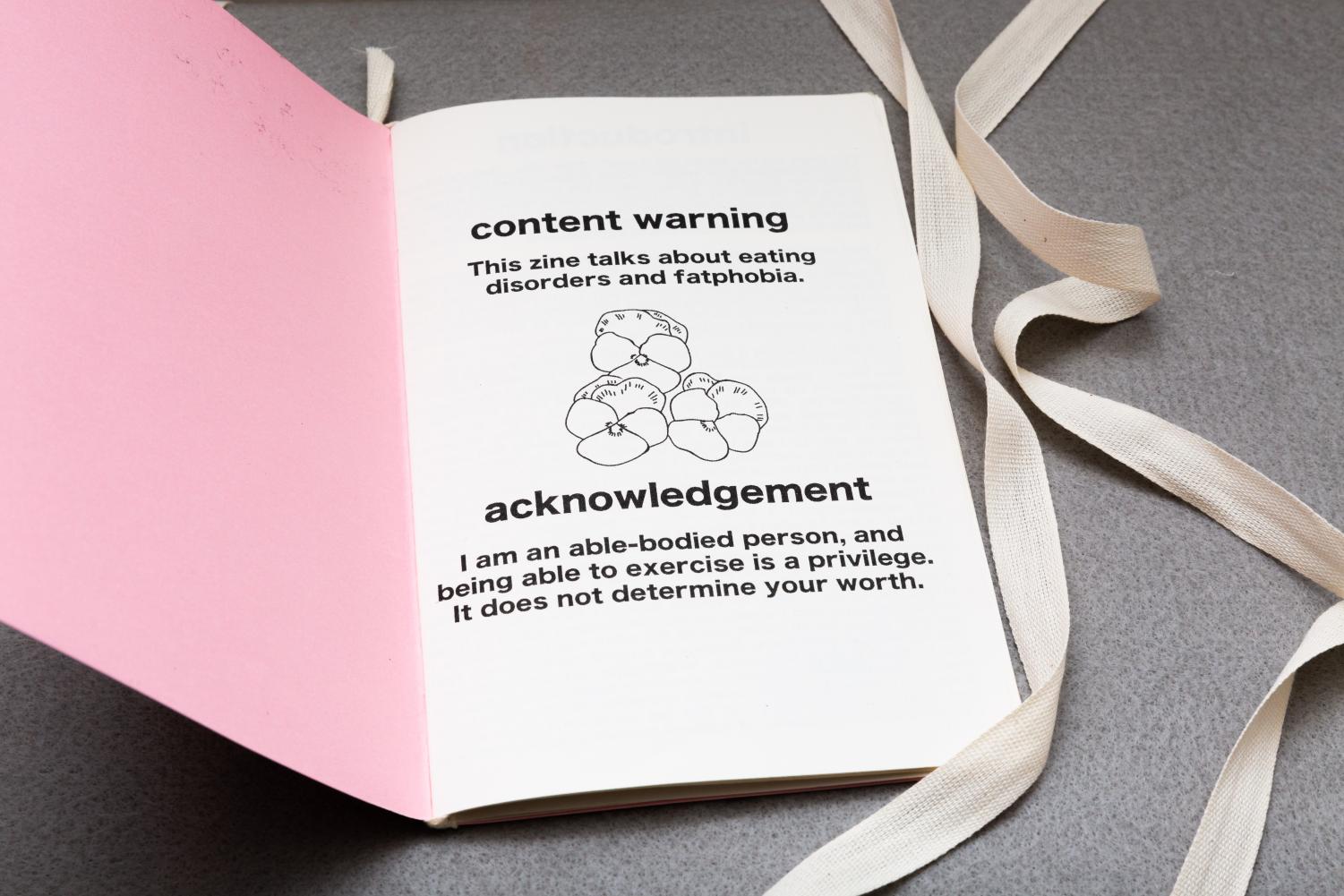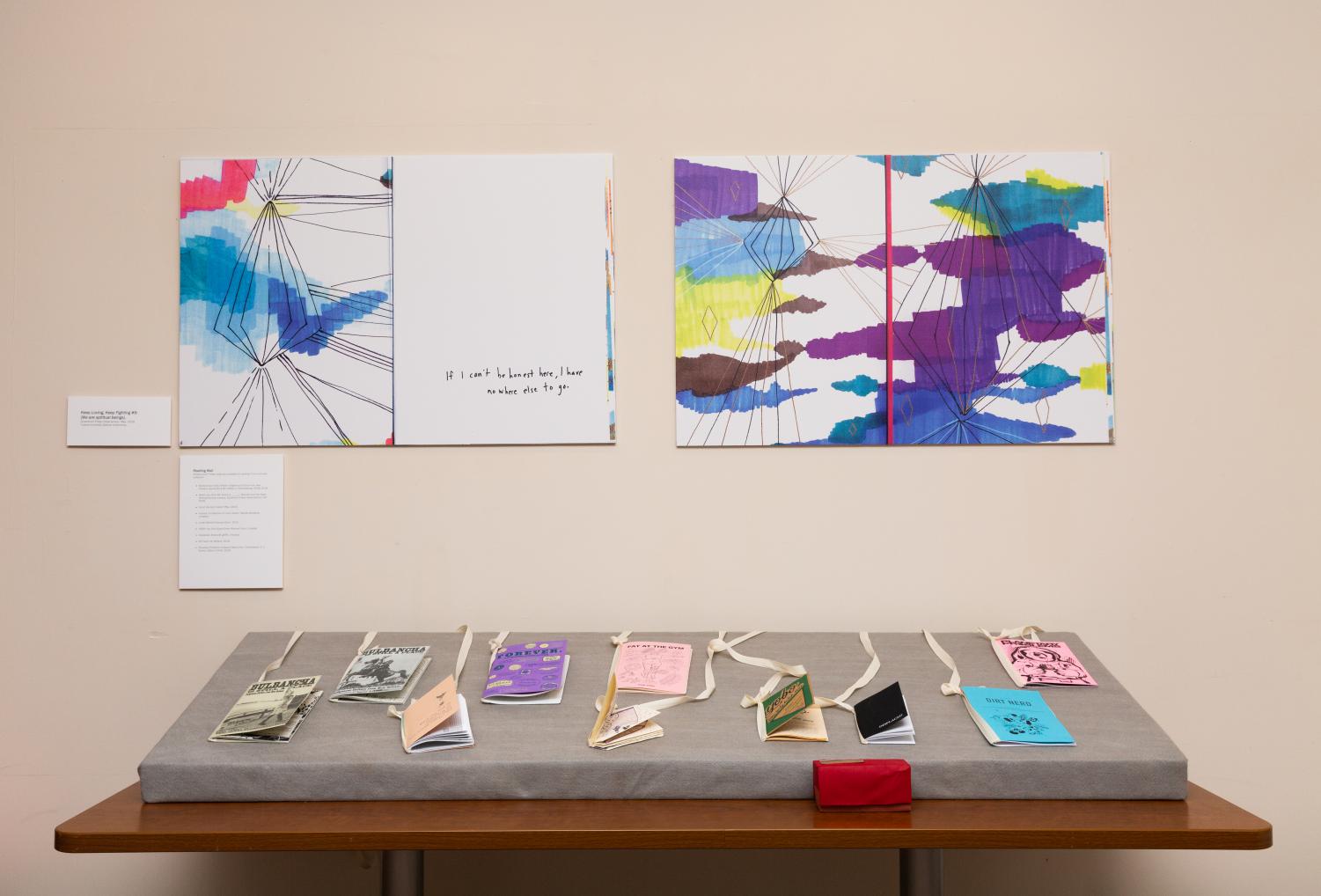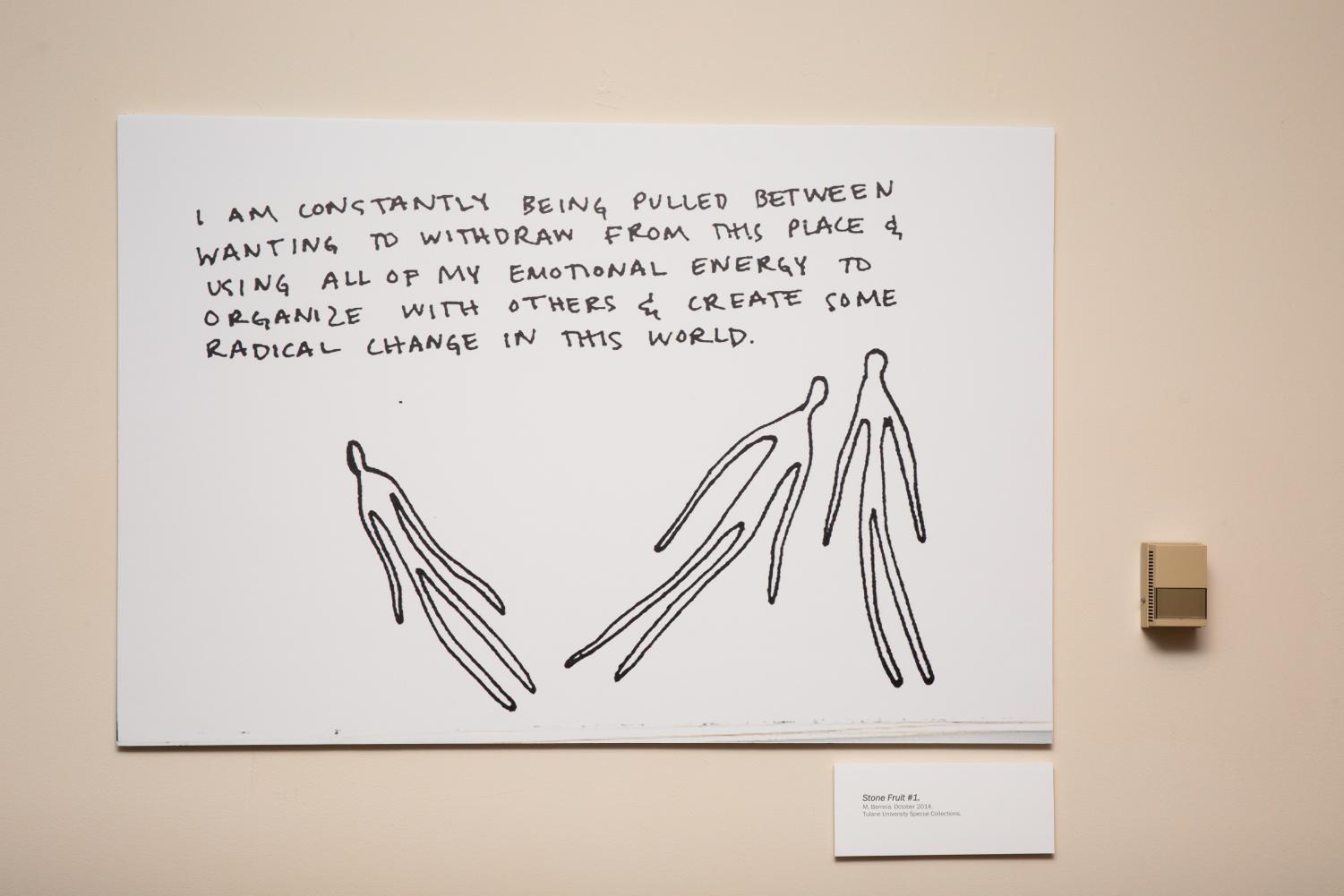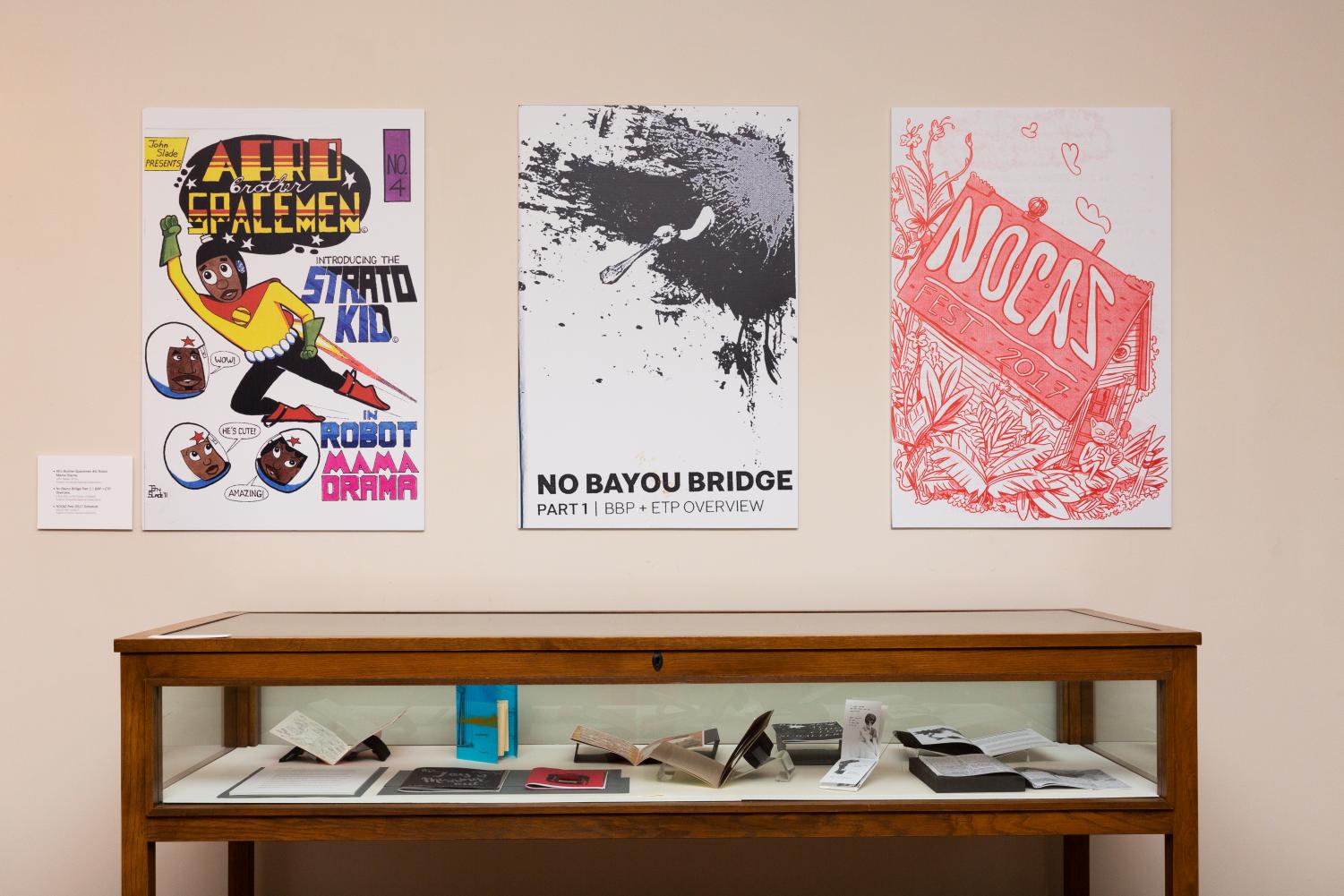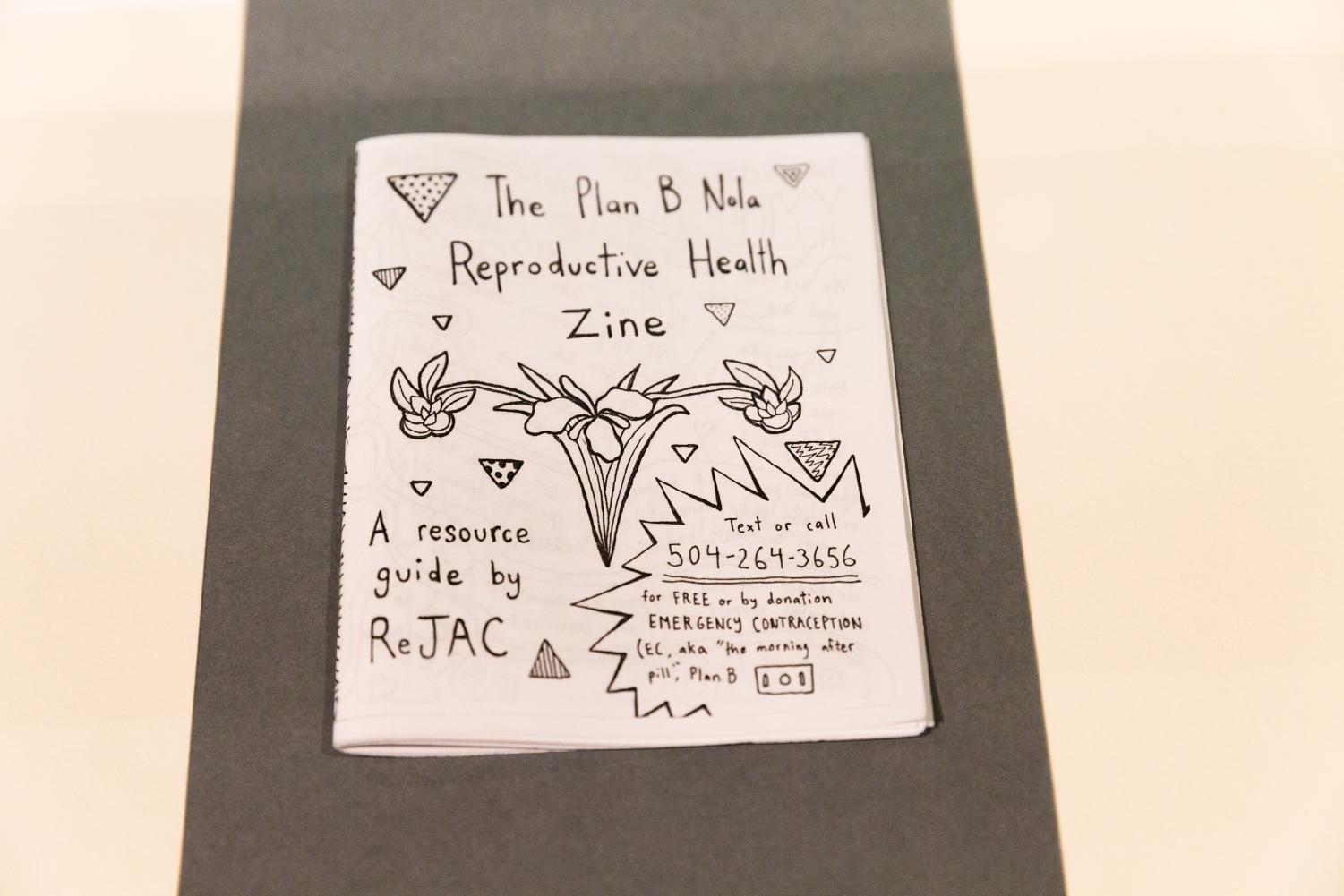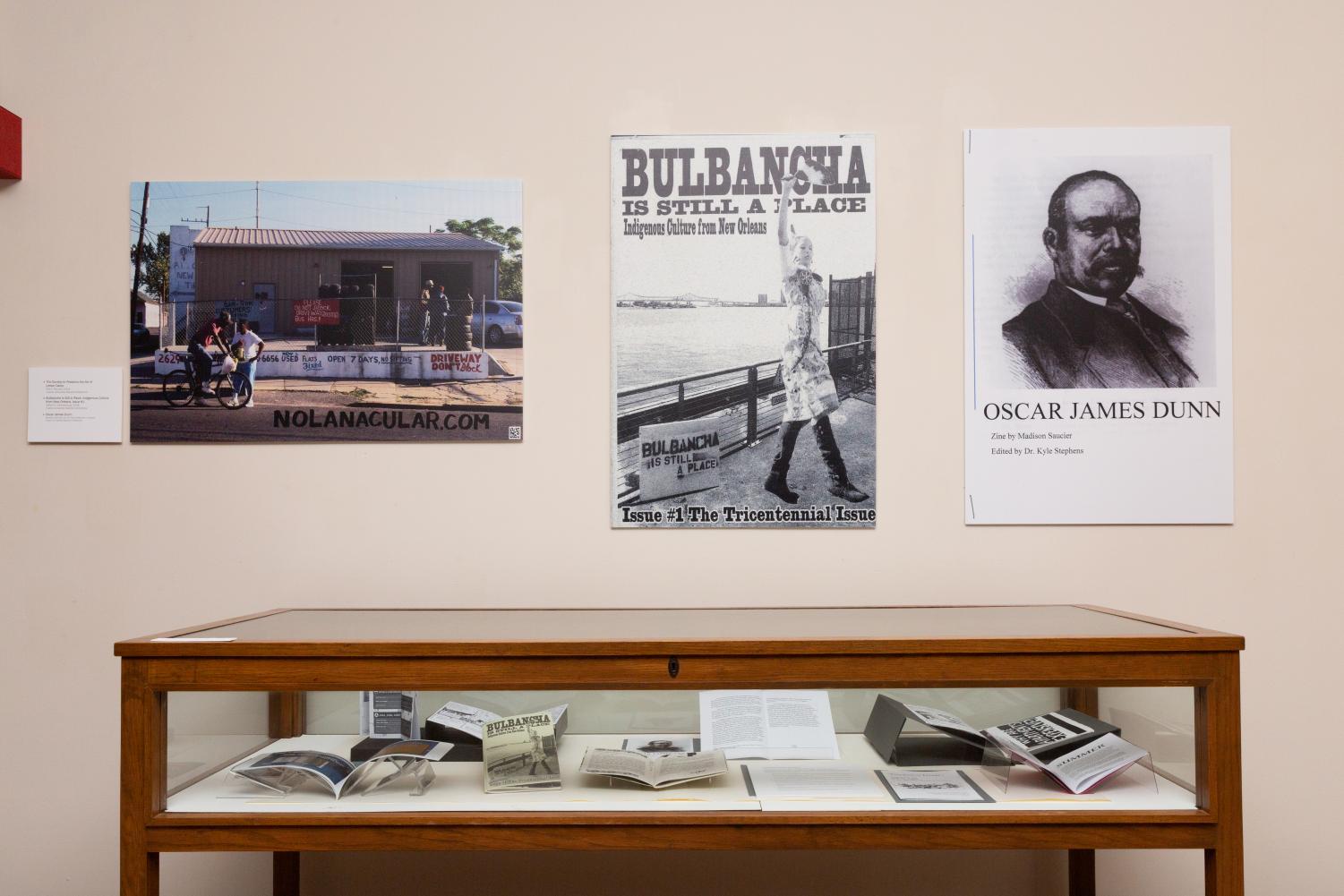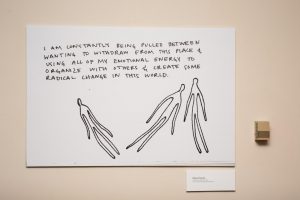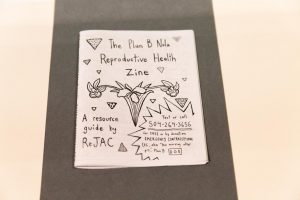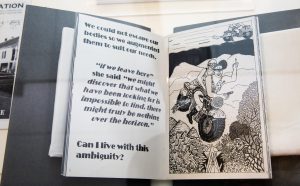A look inward: ‘Where We Stand: Zines from New Orleans’
Tucked away in a quiet gallery on the second floor of Joseph Merrick Jones Memorial Hall is a small exhibit room. No artifacts or grand portraits hang from its walls, and no guide is present to give an hour-long tour. Only small paper booklets, many covered completely in handwritten typeface and unrefined sketches and photographs, fill its glass display cases. Because of this, it may surprise some to learn that these small booklets, or zines, contain some of the most intimate and expansive insights into life in New Orleans ever collected.

These booklets are New Orleans zines and belong to Tulane’s new Special Collections exhibit, “Where We Stand: Zines from New Orleans,” a collaborative gallery organized jointly by the Amistad Research Center, Tulane Special Collections, Newcomb Archives and other private collectors. Zines, short for magazines, are self-published works of art or literature. Zines can be made by anyone, with any material and about anything. The do-it-yourself nature of zines means that each work emerges as a deeply personal and political work of self-expression. As a result, “Where We Stand” feels less like a gallery and more like a diary.
The space is quiet and often unoccupied, leaving plenty of open space to contemplate the various genres of zines on display. Each cabinet showcases a theme, which only further highlights how diverse the zine community of the city is. On one side, there are science fiction comics with thick lines and peppy catchphrases, while on the other side there are political treatises on the indigenous history of Orleans Parish. Each work is wildly different in tone and style. Typical to many zines, the majority in the exhibit offer sardonic and referential jabs at the sociopolitical landscape of their periods, showcasing the importance of the zine as a passive form of rebellion.
Above all, “Where We Stand” is intimate. Many of its zines are unafraid to stare the struggles of the New Orleans population directly in the face. Issues like LGBTQ+ rights, white privilege and gentrification in particular take center stage. One of the most striking sections of the gallery is devoted entirely to the collected experiences of zine authors during the aftermath of Hurricane Katrina, where standout works like “I Hate This Part of Texas” depict the complicated answers to questions concerning recovery, blame and hope.
“Where We Stand: Zine from New Orleans” is a modest achievement in self-narrative. The exhibit, which is open now until Apr. 3, serves as a powerful reminder of the diversity of experience and opinion within the New Orleans city limits. As visitors head for the exit, a zine turned to an open page may catch the eye. On one side, shaky letters whisper, “there might truly be nothing over the horizon.” A drawing of two women on a motorcycle, embracing, adorns its other side. The woman driving is grinning, proudly flashing a middle finger to the viewer. She asks, “Can I live with this ambiguity?”
Perhaps, through this exhibit, she won’t have to live through it alone.
Your donation will support the student journalists of Tulane University. Your contribution will allow us to purchase equipment and cover our annual website hosting costs.



